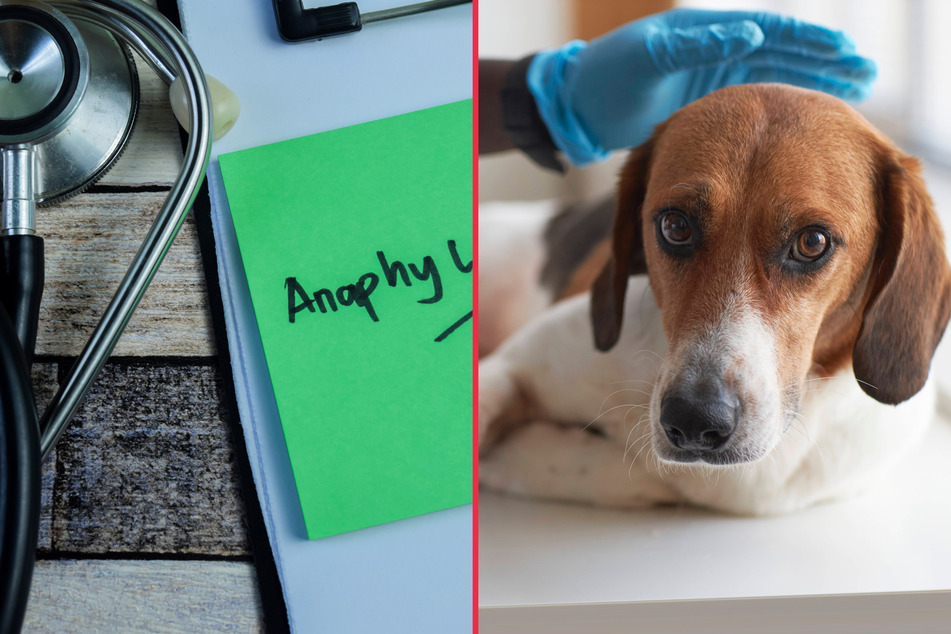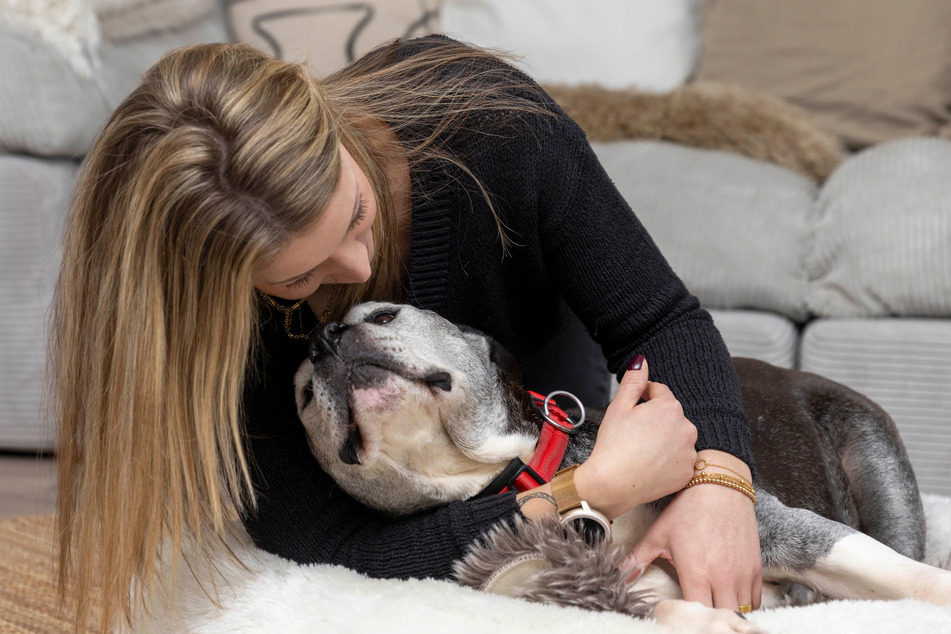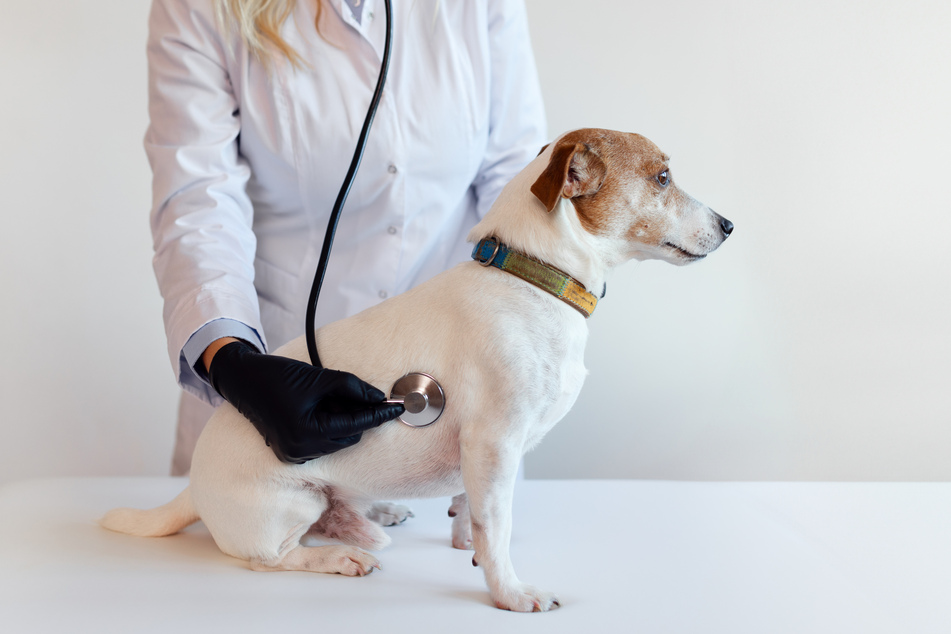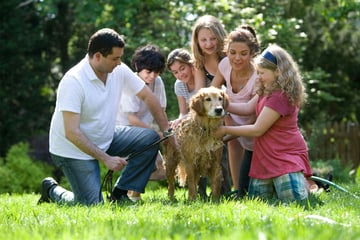Anaphylaxis in dogs: What it is, symptoms, and treatments
Anaphylaxis in dogs needs to be taken seriously by any dog owner. By identifying whether your dog is susceptible, and knowing the symptoms and which treatments are available, you'll keep your darling doggo safe.

Few episodes are more dangerous than when someone suffers from a serious allegery and anaphylactic reaction.
Often triggered in people by chemicals in foods like peanuts, someone in full-blown anaphylactic shock can die quickly, and needs immediate emergency medical attention both from first responders and from professional medical staff at the hospital.
Yet, such resources are not available to the same extent for our pups, so the idea of anaphylaxis in dogs can be a serious issue. So: can dogs get anaphylaxis, what are the symptoms to look out for, and what treatments are available?
Let's dive in.

What is anaphylaxis in dogs?
Despite popular belief that anaphylaxis is specifically an allergy that relates to peanuts, causing the closing of airways and suffocation of its victim, an anaphylactic reaction is actually any allergic reaction that causes the immune system to produce a chemical known as Immunoglobulin E.
Caused by a hypersensitivity to some sort of foreign protein, allergic reactions that can be classified as anaphylactic are often particularly severe, extremely fast-acting, and deadly if left unattended. The reaction itself can be triggered by a variety of different things and, as VCA Animal Hospital reported, "theoretically, any foreign substance can produce an anaphylactic reaction."
Ultimately, anaphylaxis is a bodily reaction that your dog is having abnormally. Much like in a human, your dog's immune system is overreacting to the allergen, and this overreaction is what causes the problem.
Anaphylactic shock in dogs
The term "anaphylactic shock" refers to a situation in which the immune system has released chemicals that causes the body to go into shock. When this happens, your dog's blood pressure will suddenly drop, and its airways will narrow, causing trouble breathing.
Anaphylactic shock is the most dangerous stage and example of anaphylaxis, and is the moment at which immediate intervention becomes a do-or-die situation. When airways start to become restricted, it is not uncommon for dogs – or humans – to start to suffocate, which can quickly cause death.
Important: This is the point where things get really serious. If you suspect that your dog is going into anaphylactic shock, or having an anaphylactic attack, this is considered a medical emergency. In such a situation, you must immediately take your dog to the veterinarian.
What causes anaphylaxis in dogs?

The most common cause of an anaphylactic reaction in dogs is a sting from an insect like a bee or wasp.
What's important, though, is that a dog can only have an allergic reaction from said sting if it had previously been exposed to that same toxin. As a result, the first time a dog gets stung, it is unlikely to suffer from a major anaphylactic reaction.
Instead, the first time a dog is exposed to a substance that it is allergic to and which may in the future cause anaphylaxis, it will likely develop mild symptoms such as boils, swelling, hives, or redness. When a dog then gets stung, eats the offending food, or in some way or another comes into contact with the substance again, a full-blown anaphylactic reaction may occur as its immune system overreacts.
A number of common causes of anaphylaxis in dogs includes:
- Insect bites and stings
- Proteins in certain foods
- Chemicals in certain vaccines and medications
- Pollutants in the environment
- Household chemicals
There are many different things which can cause anaphylaxis in dogs. Keep an eye out for the symptoms described below and react accordingly.
How common is anaphylaxis in dogs?
Full-blown systemic anaphylaxis is very rare in dogs, much like in humans.
While it is not uncommon for a dog to have a mild or minor allergic reaction, such as localized swelling or itching, anaphylactic shock or severe allergies are not particularly common. It is still a good idea, however, to have your veterinarian check for allergies when your dog is still young, so you are not caught unaware.

Anaphylaxis symptoms in dogs: Signs to look out for
There are a variety of iconic and easy-to-recognize symptoms and signs that indicate that your dog is suffering from an anaphylactic reaction. It is important to learn what these symptoms are so that you can quickly recognize and identify what is happening and take appropriate action. In other words, go to the vet.
The symptoms of anaphylaxis in dogs include the following:
- Itchiness
- Red skin
- Swelling
- Extreme salivation
- Vomiting
- Diarrhea
- Difficulty breathing
- Bluish gums and tongue
- Hives
Different anaphylaxis causes will cause different localized symptoms, depending on whether your dog has swallowed, touched, inhaled, or been stung by the offending substance.
How to treat anaphylaxis in dogs

Unlike in humans, where an EpiPen can be used to relieve the symptoms of an attack and open up airways before medical help arrives, dogs cannot be treated or helped at home. In the case of an anaphylactic reaction, dogs must be monitored closely and taken immediately to an emergency veterinarian, who will have the tools and medicine to help.
Steps to take if your dog has an anaphylactic attack:
Step 1: Calm your dog down and, if you can, carefully remove whatever is causing the reaction. If it is a bee sting, try to get the stinger out as best you can. If your pup is eating or sniffing something toxic to them, move it away. Keep it with you to show the veterinarian if possible.Step 2: Take your dog immediately to an emergency veterinarian. Do not wait until the morning or until you can get an appointment with your usual vet. Instead, seek medical intervention immediately. Make sure to have researched this in advance, so that you don't need to figure out where to go when in a full-blown emergency situation.
Step 3: Follow all steps and advice laid out by your veterinarian and make preparations for next time, as well as mental notes of what caused the reaction so you can avoid it in the future.
Anaphylaxis in dogs is a big deal, and something that needs to be dealt with seriously and swiftly. The consequences for inaction can be devastating and, in many cases, be deadly.
Allergic reactions in dogs can be deadly, so go to the vet
There is no good in trying to be strong when it comes to matters of your darling doggo's health. This goes double when talking about anaphylaxis in dogs. It is such a dangerous and potentially deadly affliction that anything but immediate emergency medical assistance could quickly spell the end for your canine companion.
With that in mind, it's also worth talking about allergies in general. Different dogs will have different allergies, and it's extremely important to identify them early. As a puppy, it is best to get advice from your vet as to how you can determine if your pup is allergic to anything. By doing so, you will keep it far safer and far happier.
Don't be a hero for your dog. Instead, go to the veterinarian as quickly as possible if your dog might have had an allergic or anaphylactic reaction - and don't leave anything to chance.
Cover photo: Collage: IMAGO/Pond5 Images/Westend61





